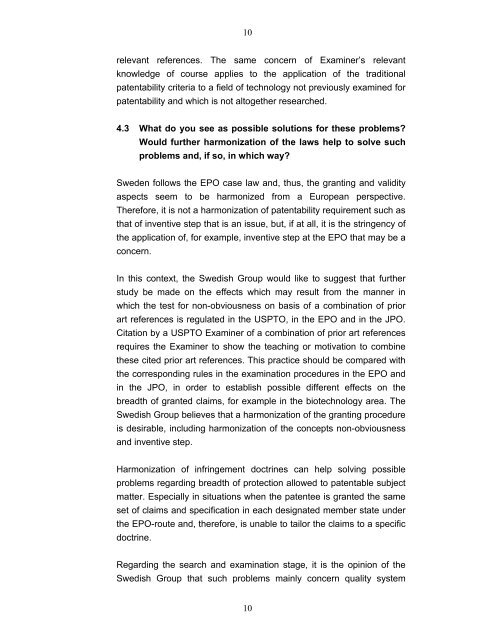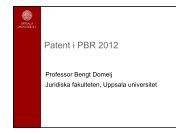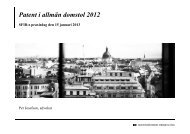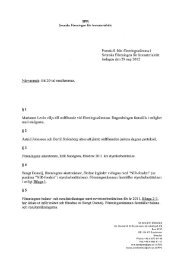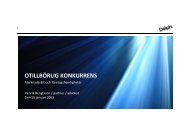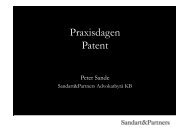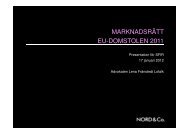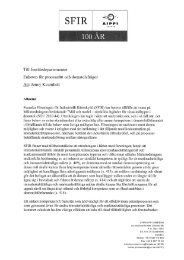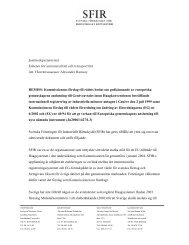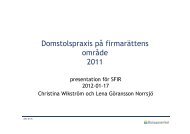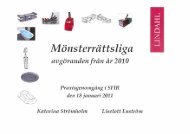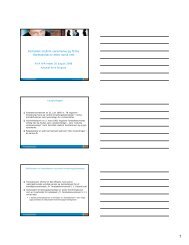Q178 draft report.pdf - SFIR
Q178 draft report.pdf - SFIR
Q178 draft report.pdf - SFIR
Create successful ePaper yourself
Turn your PDF publications into a flip-book with our unique Google optimized e-Paper software.
10<br />
relevant references. The same concern of Examiner’s relevant<br />
knowledge of course applies to the application of the traditional<br />
patentability criteria to a field of technology not previously examined for<br />
patentability and which is not altogether researched.<br />
4.3 What do you see as possible solutions for these problems?<br />
Would further harmonization of the laws help to solve such<br />
problems and, if so, in which way?<br />
Sweden follows the EPO case law and, thus, the granting and validity<br />
aspects seem to be harmonized from a European perspective.<br />
Therefore, it is not a harmonization of patentability requirement such as<br />
that of inventive step that is an issue, but, if at all, it is the stringency of<br />
the application of, for example, inventive step at the EPO that may be a<br />
concern.<br />
In this context, the Swedish Group would like to suggest that further<br />
study be made on the effects which may result from the manner in<br />
which the test for non-obviousness on basis of a combination of prior<br />
art references is regulated in the USPTO, in the EPO and in the JPO.<br />
Citation by a USPTO Examiner of a combination of prior art references<br />
requires the Examiner to show the teaching or motivation to combine<br />
these cited prior art references. This practice should be compared with<br />
the corresponding rules in the examination procedures in the EPO and<br />
in the JPO, in order to establish possible different effects on the<br />
breadth of granted claims, for example in the biotechnology area. The<br />
Swedish Group believes that a harmonization of the granting procedure<br />
is desirable, including harmonization of the concepts non-obviousness<br />
and inventive step.<br />
Harmonization of infringement doctrines can help solving possible<br />
problems regarding breadth of protection allowed to patentable subject<br />
matter. Especially in situations when the patentee is granted the same<br />
set of claims and specification in each designated member state under<br />
the EPO-route and, therefore, is unable to tailor the claims to a specific<br />
doctrine.<br />
Regarding the search and examination stage, it is the opinion of the<br />
Swedish Group that such problems mainly concern quality system<br />
10


